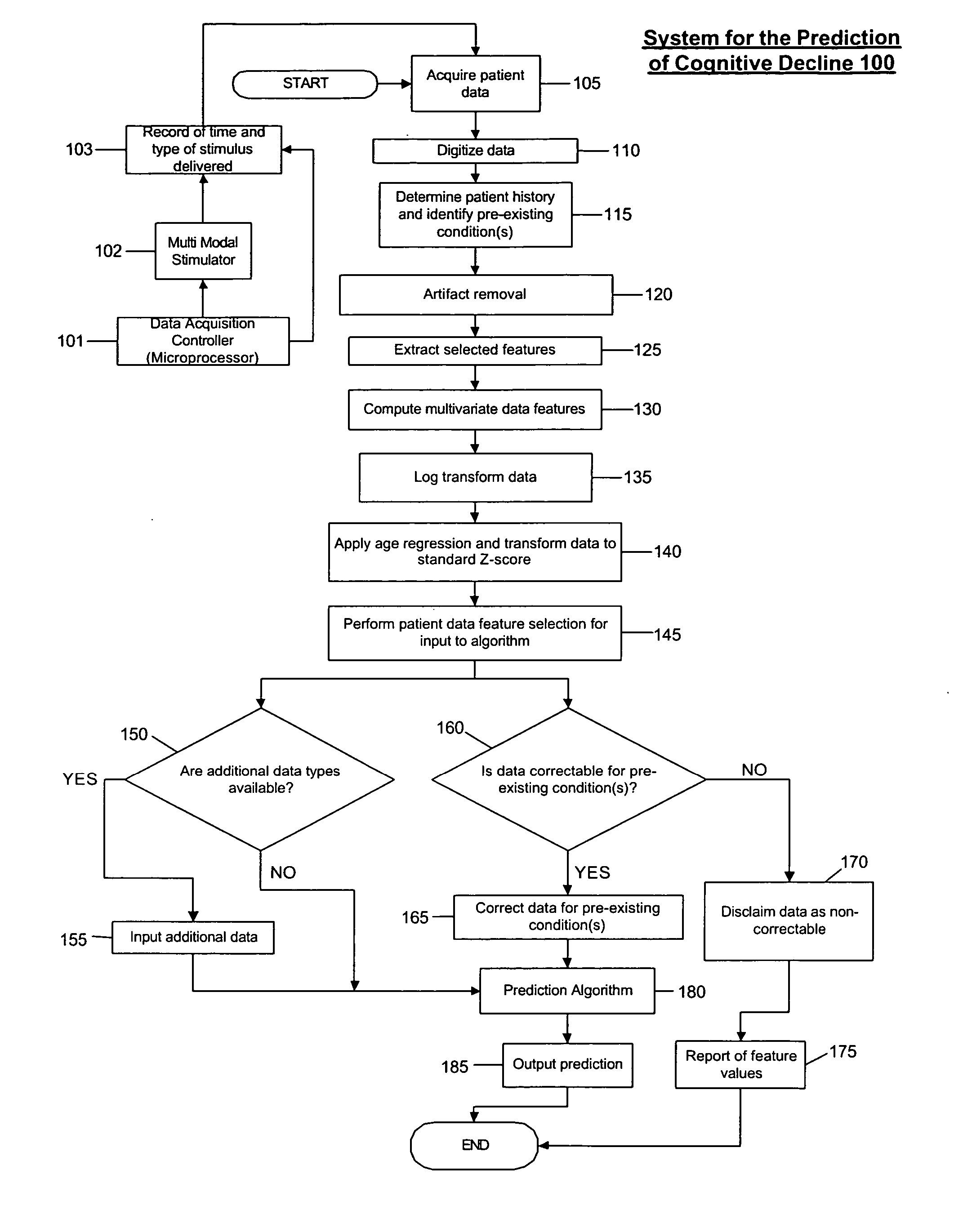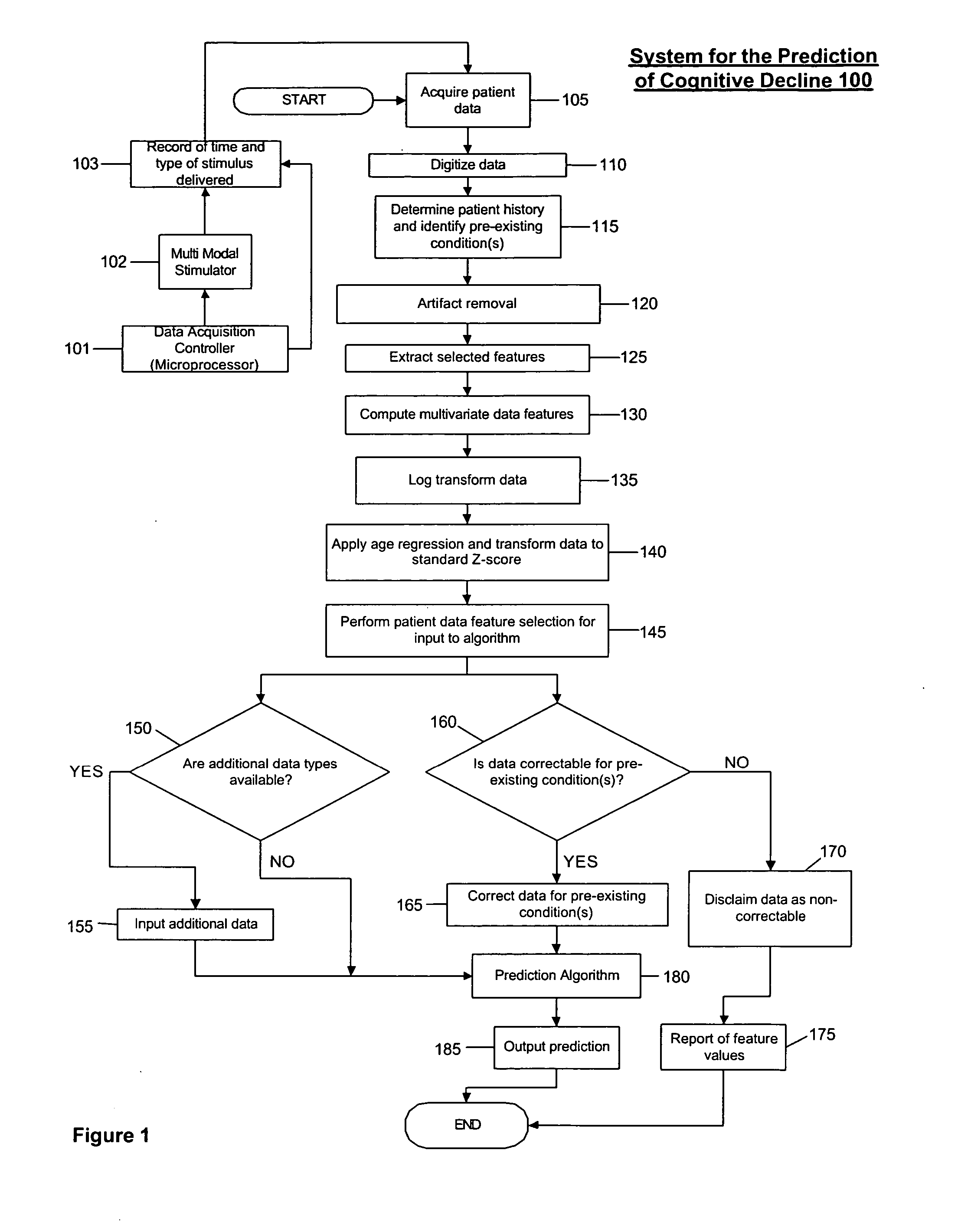System and method for prediction of cognitive decline
a cognitive decline and system technology, applied in electroencephalography, diagnostic recording/measuring, applications, etc., can solve the problems of poor test-retest reliability of nc tests in certain patient populations, inaccurate or not useful with certain individuals, and short attention span
- Summary
- Abstract
- Description
- Claims
- Application Information
AI Technical Summary
Problems solved by technology
Method used
Image
Examples
Embodiment Construction
[0015] The present invention is directed to a system and method for the prediction of future cognitive decline. The system and method according to the present invention use quantitative electroencephalogram (qEEG) and / or quantitative magnetoencephalogram (qMEG) and / or quantitative event related potential (qERP) data to predict future cognitive decline in an individual. Unlike NC or neurobiological tests or other predictors used to determine present cognitive deterioration, the present invention predicts cognitive decline without the requirement of individual cooperation, is non-invasive, imposes no radio-active burden and accurate, objective results may be obtained by a skilled professional rather than the neurologist, psychiatrist, or neurophysiologist required by the any the other tests.
[0016]FIG. 1 shows a flow chart of an embodiment of a system for the prediction of cognitive decline 100 according to the present invention. The system for the prediction of cognitive decline 100 ...
PUM
 Login to View More
Login to View More Abstract
Description
Claims
Application Information
 Login to View More
Login to View More - R&D
- Intellectual Property
- Life Sciences
- Materials
- Tech Scout
- Unparalleled Data Quality
- Higher Quality Content
- 60% Fewer Hallucinations
Browse by: Latest US Patents, China's latest patents, Technical Efficacy Thesaurus, Application Domain, Technology Topic, Popular Technical Reports.
© 2025 PatSnap. All rights reserved.Legal|Privacy policy|Modern Slavery Act Transparency Statement|Sitemap|About US| Contact US: help@patsnap.com



